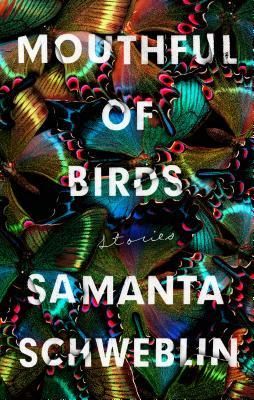I’m not that into horror films or scary stories around Halloween. Not because I don’t enjoy them, from their smart twists to their artful suspense, but simply because it doesn’t take much to put me in that vivid state of anxiety that leaves me sleepless.
So I try to indulge in other ways. The gothic genre is atmospheric, imbued with ghosts and the haunting visages of bad men, foggy moors, and haunted homes and dark corners. It’s all just enough to leave me unsettled, questioning, and in a vivid October mood, without leaving me unable to fall asleep (here, we flash back to my two separate, misguided screenings of horror film Sinister, or the weeks tween me couldn’t sleep after reading the prologue of Cujo). Not all of these book recommendations are supernatural, not all of them are spooky in the traditional sense, but they all invoke the gothic, the shadowy, and that rich ghostly October feeling that gets into your soul.
Here are nine gothic books to read this autumn with a good cup of tea (or a warm glass of whiskey), a chunky sweater keeping you warm, and a cat at your feet.
Nada by Carmen Laforet, translated by Edith Grossman
This beautifully written gothic classic was a happy surprise, a book I discovered half by accident when I picked it up in a bookstore in Barcelona. I read it on the twisting stone pathways of the city, and it was perfect. Nada tells the story of Andrea, a young orphaned woman who comes to Barcelona to attend university but finds her nights haunted by the strange figures of her aunts and uncles, from artistic, nihilistic Román to violent Juan to the secretive Gloria. It’s a family drama painted all in shadows and dark tones, and I fell deeply in love with Laforet’s writing and with Andrea’s character growth.
Revenge: Eleven Dark Tales by Yoko Ogawa, translated by Stephen Snyder
Ogawa’s novel The Memory Police was surreal and rich, a fable about memory and surveillance and loss. In Revenge, Ogawa presents a collection of interconnected, webbed short stories that are creepy and suspenseful. It all begins with an aspiring writer who discovers that her new landlady recently murdered her husband; from there, the web casts out in all directions, telling tales of murder, jealousy, crime, and the macabre.

Things We Lost in the Fire: Stories by Mariana Enriquez, translated by Megan McDowell
I have read this collection twice now, and its stories continue to haunt me. Enríquez took the gothic horror genre, with all its surreal twists and dark turns, and paired it with social critique. Between the two, Enríquez paints these emotionally arresting and visually haunting stories. I admit that some of these stories left me genuinely scared. Her complex, “difficult” female protagonists and her spell-bending, imaginative plot lines root her tales into the pages.
The Lost History of Dreams by Kris Waldherr
In this modern-day rendition of the Victorian gothic novel, a post-mortem photographer named Robert must transport his cousin’s remains back to an abandoned chapel for burial. But when he arrives, the woman in charge of the chapel refuses to open it. He’s left in a foggy forest and a cold home, investigating his cousin, the poet Hugh de Bonne, and his wife and muse, Ada. As Robert digs deeper into de Bonne’s story, he will encounter mysterious letters and unexpected disasters, all the while uncovering surprises in his cousin’s past, as well as his own.
Her Body and Other Parties by Carmen Maria Machado
Machado’s collection is dreamy, surrealist, dark, and sexual; her writing features women and their bodies, their queerness, and the ways the world turns against women. I swallowed this collection whole in mere hours the first time I read it. Machado writes about a woman with a green ribbon around her neck; a woman listing her lovers as a plague descends on society beyond her island home; about young women mysteriously fading away one by one. It’s an acclaimed collection that deserves even more attention than it already has, for its haunting darkness and vivid imagination.

Carmilla by Joseph Sheridan le Fanu
Carmilla is an absolutely iconic novella in the horror genre from 1872, a forerunner to most of the vampire novels you know and love, even predating Dracula by more than 25 years. It is a rich Gothic tale in which Laura is preyed on by the pale, strange figure of Carmilla, who begs for more and more attachment and love. This early vampire novel is richly homoerotic and sapphic, a slow burn that provides a prototype for the lesbian vampire, and a Halloween must-read for anyone seeking an underrated queer classic and a vampiric slow burn.
Gothic Tales by Elizabeth Gaskell
I can hear you now: “The author of North and South wrote ghost stories?” She certainly did, and plenty of them: supernatural, eerie stories that use local legends, witchy history, and more to dig into the topics of female identity and the patriarchy through the shadowy lens of the creepy, the supernatural, and the dark. This collection includes classics of hers, such as “The Old Nurse’s Story,” where a strange child roams the moors, and “Lois the Witch,” a tale of jealousy and desire in the atmosphere of the Salem witch hunts.
Mexican Gothic by Silvia Moreno-Garcia
Socialite Noemí, an intelligent and stubborn woman determined to rebel, leaves her city life behind to visit English mansion High Place, in order to save her cousin, who has been writing her disturbing letters. What she finds will include a fog of eugenic texts, sleep-walking, strange cemeteries, and hallucinatory visions of mushrooms, mold, and ghosts. It’s a classic vivid gothic tale set in Mexico with a fierce heroine, full of velvety darkness and suspense.

Mouthful of Birds by Samanta Schweblin, translated by Megan McDowell
Schweblin’s writing is some of the best out there today, and if her novel Fever Dream proved anything, it’s that she has a unique gift for creating an unsettling fluttering feeling of dread in the pit of a reader’s stomach. Mouthful of Birds is a collection of haunting, scary tales, surreal and quietly frightening, eerie and violent. Children turn into butterflies; a daughter begins to eat birds alive. Schweblin’s stories are vivid, absurd, and dream-like—or perhaps, more accurately, nightmarish.
Source : 9 Gothic Books to Read this Autumn














